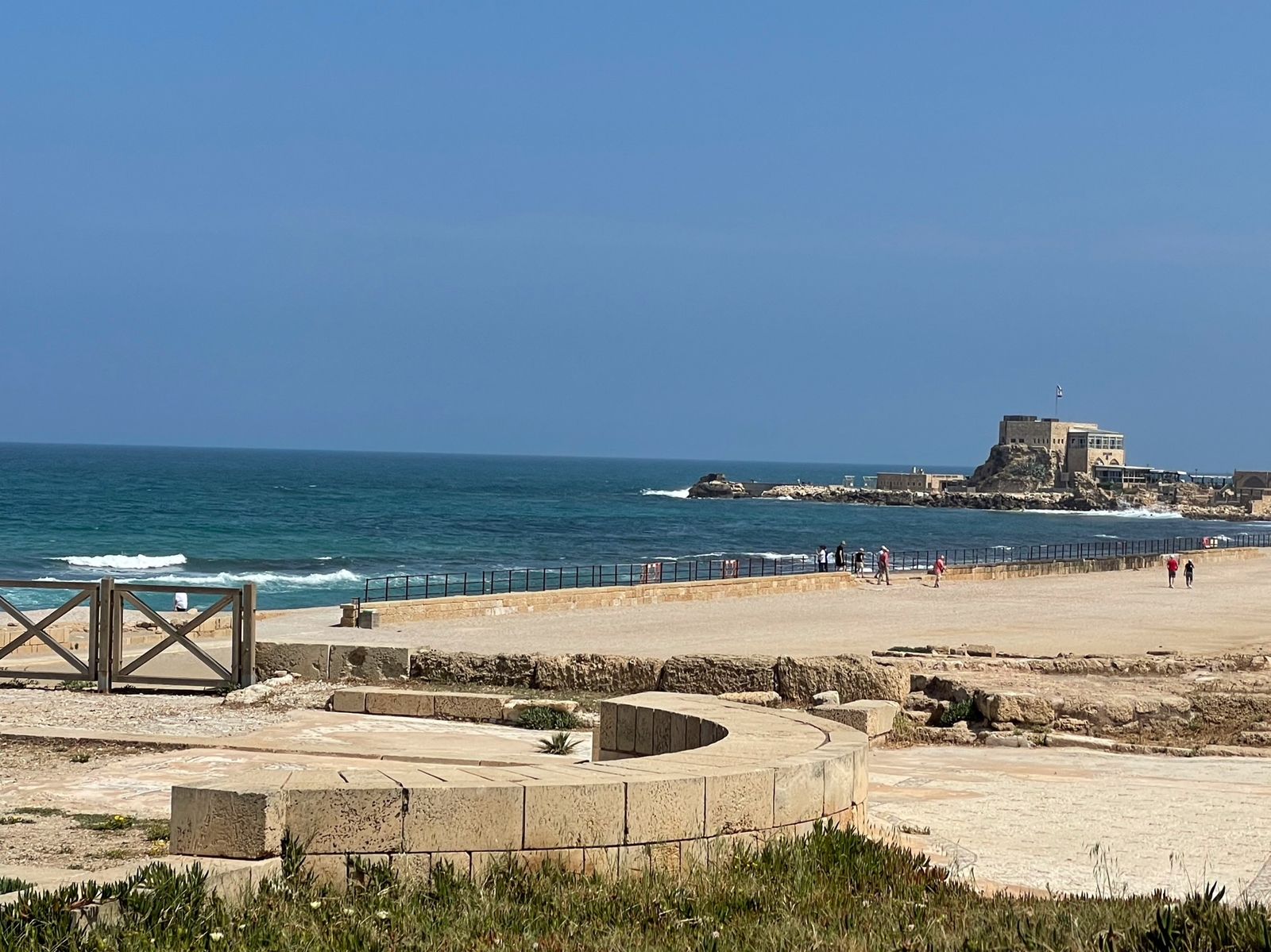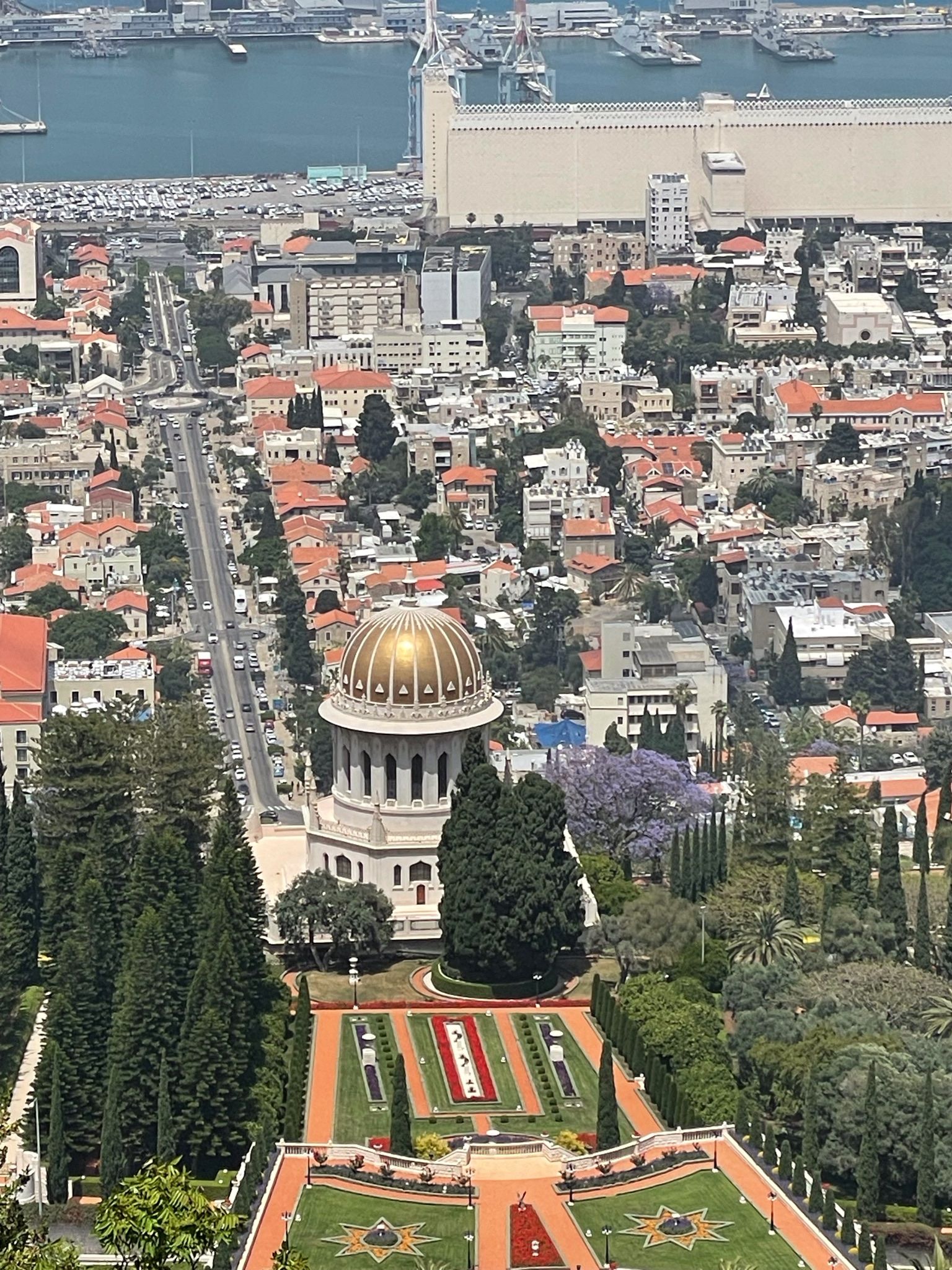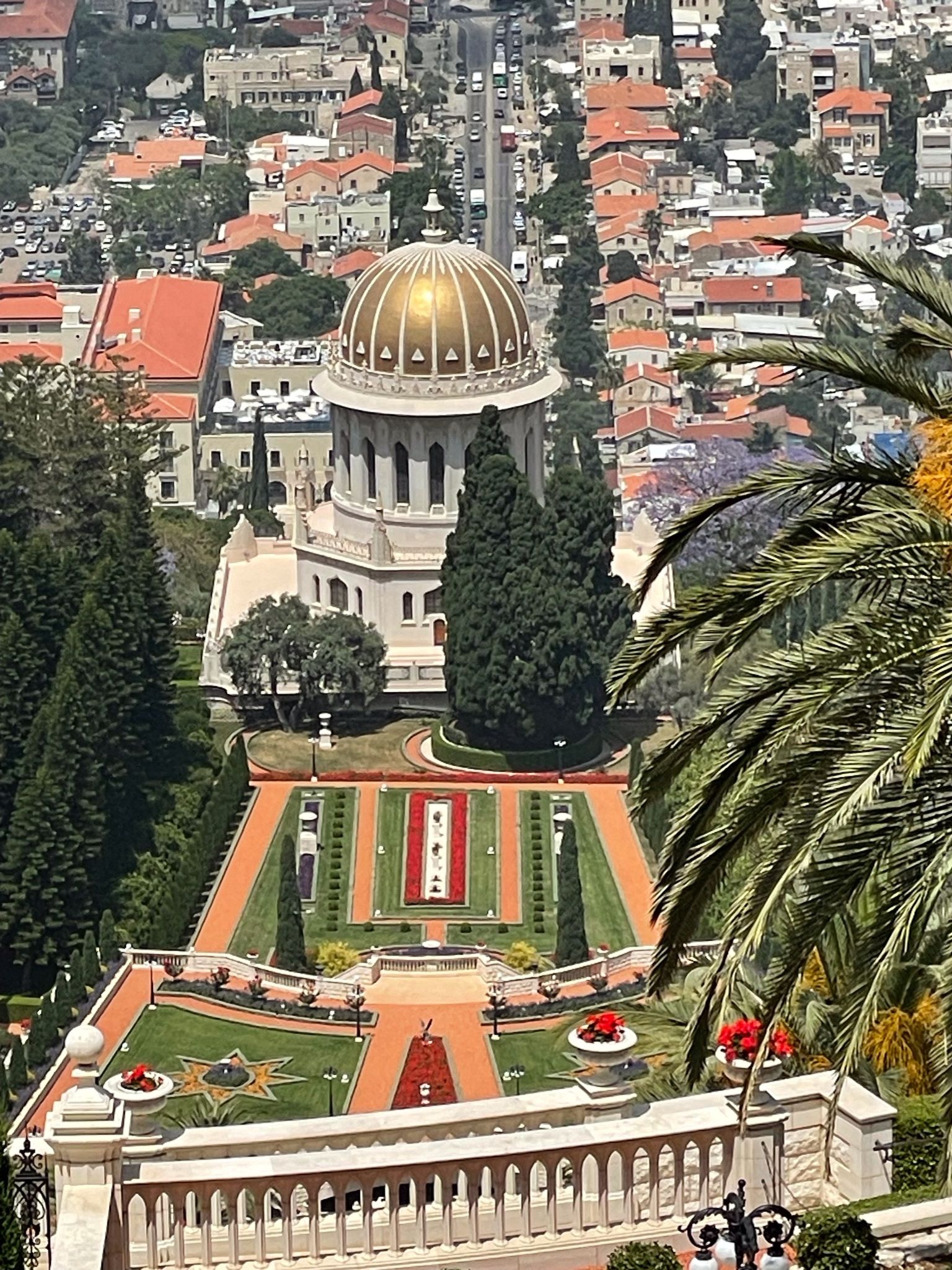Day 7: Caesarea National Park, best falafel in Wadi Nisnas, Baha’i Gardens

Today’s overview of Haifa took us first to Caesarea National Park, a major Roman ruin area on the coast between Tel Aviv and Haifa that is still being excavated. Originally an ancient Phoenician port, it was rebuilt as a Roman city by King Herod in 22-10 BCE and dedicated by him to Caesar Augustus


A restored amphitheater, a hippodrome,, a Medusa sarcophagus, and the palace area were set against the beautiful backdrop of the Mediterranean Sea.







We finished the tour with a quick trip about a mile away where the ruins of the aqueduct system was right next to the beach. A few swimmers dotted the coastline, but we used it as a photo op.


Driving about 35 minutes to Wadi Nisnas, a mixed Jewish and Arab neighborhood, we had the best falafel of the trip so far.

Ibrahim explained that the two main reasons that Jews and Arabs get along so well in Haifa is that they often work side by side in the huge industry of refining oil from other parts of the world that come thru Israel, and, secondly, there are no holy sites in Haifa to cause arguments!
Our last stop of the day followed a long drive up to the Hadar area at the top of Haifa. It offered beautiful views of the famous Baha’i Gardens. Sadly, you could enter the gardens but only see two levels of outside plants, mostly geraniums and are not allowed anywhere else.


Although looking down ( and up the huge hill from the front in this picture taken at night from a fellow traveler) is quite beautiful, it was finished by the fact that the rest of the gardens were inaccessible. Ibrahim blamed this on tourist littering and disrespectful behavior in the past.
Dinner tonight was our official " Welcome Dinner". Dining at a restaurant named "Shtroudl" whose name reflects its location in the German colony area However, the food was a mix of good middle eastern/ Israeli food, and a few Italian dishes designed to please the tourists.
We opted for stuffed zucchini.


comments powered by Disqus